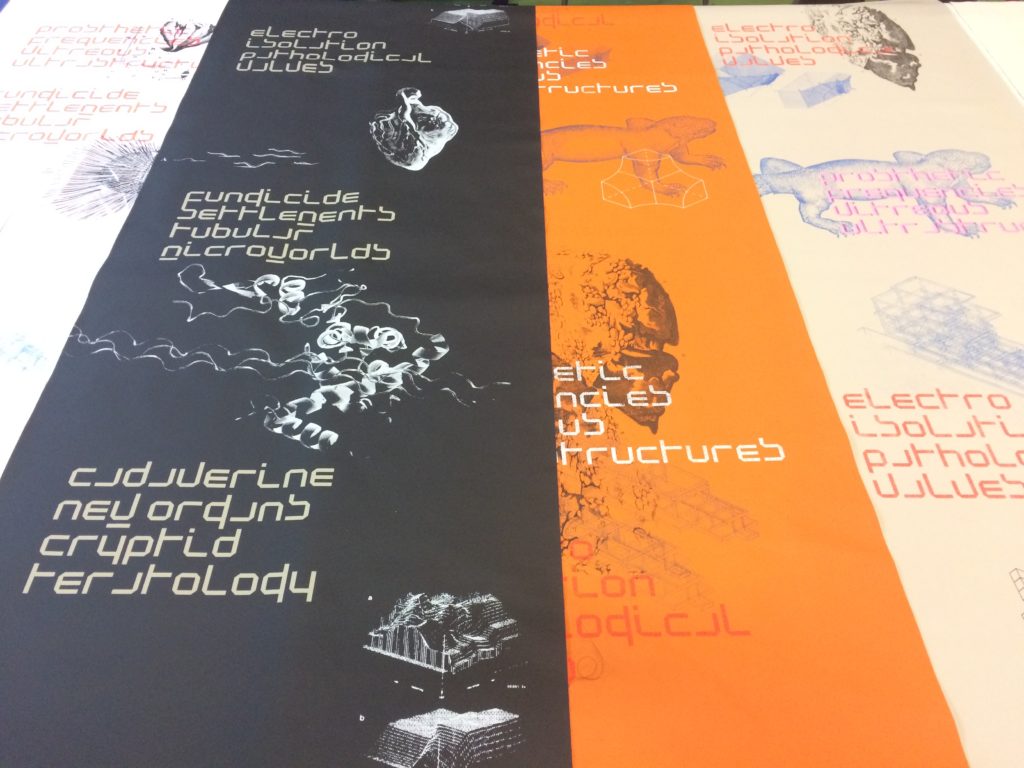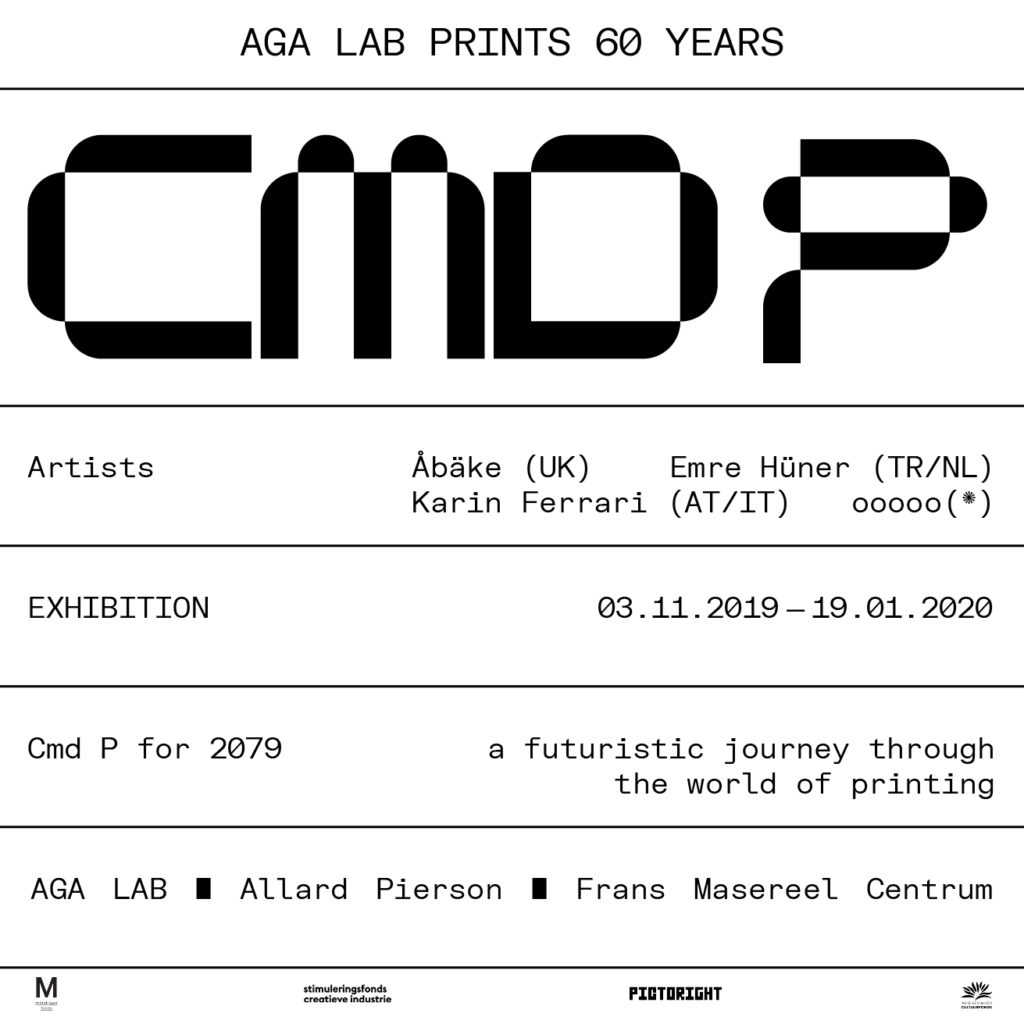Cmd P for 2079
A futuristic journey through the world of print
This exhibition has come about as the result of collaboration between the Allard Pierson and AGA LAB (formerly Amsterdam Grafisch Atelier).
For the exhibition Cmd P for 2079, curator Sofie van Dederen has selected four international artists for the purpose of research into tactile media, such as printing and printed matter, with a view to speculation on the future of this medium. She is doing so in the context of AGA LAB’s artists-in-residence programme, and in collaboration with Allard Pierson curators managing collections in the fields of graphic design, typography and calligraphy. Who will decide what and how we disseminate information, and what will the effect be of the ephemeral nature of digital media on future generations? Will printed artwork still exist in 2079, and if so, what will it look like?
Cmd P for 2079 forms the conclusion of the ‘residency’ period. The artists involved are Åbäke (UK), Karin Ferrari (AT/IT), Emre Hüner (TR/NL) en ooooo (*). The results of the project will be on view at the Allard Pierson from 3 November to 19 January 2019. The exhibition will then continue in the Frans Masereel Centre, the new exhibition space of AGA LAB’s partner studio in Flanders.


